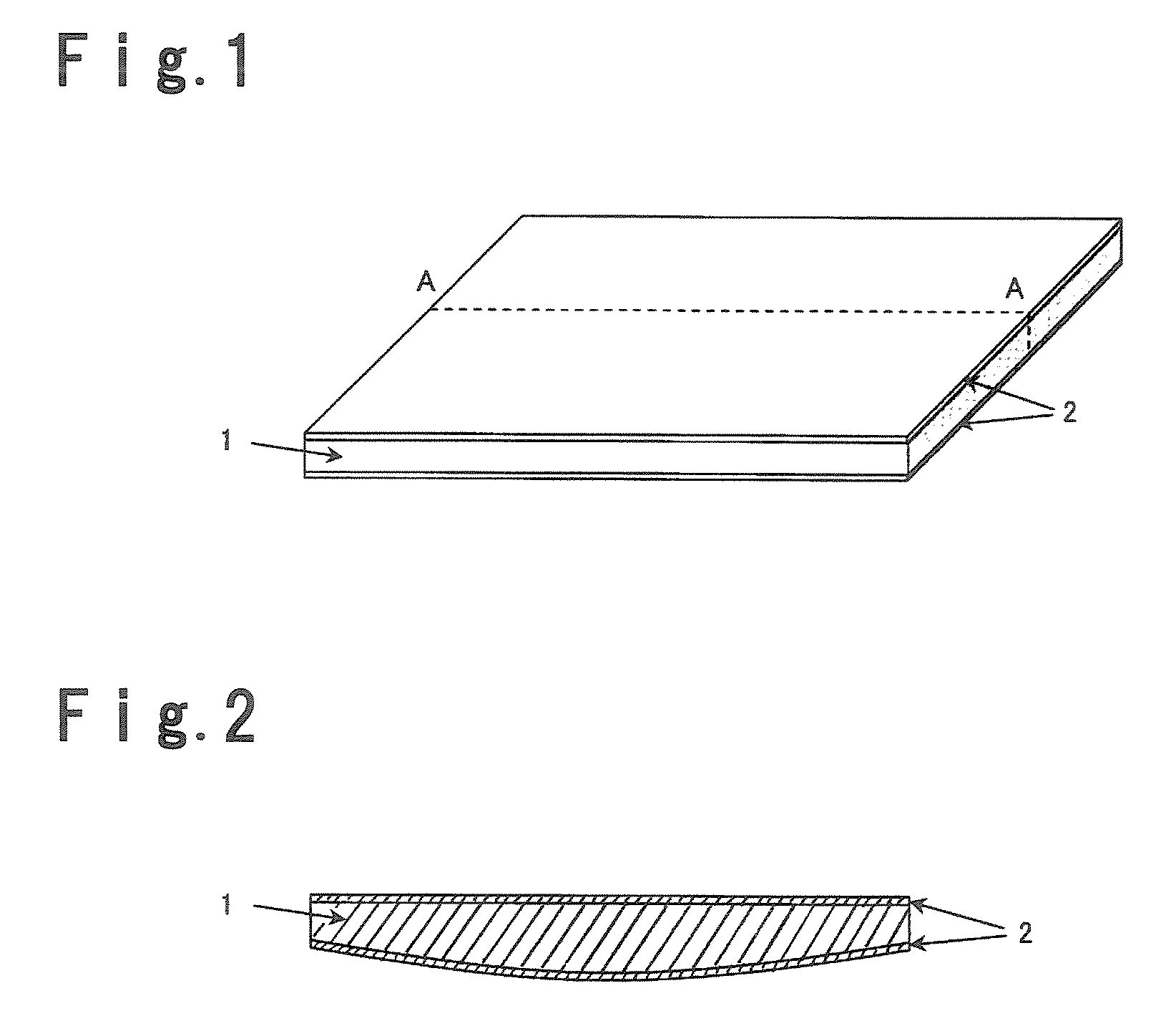Aluminum-silicon carbide composite
a technology of silicon carbide and composite materials, which is applied in the field of aluminum/silicon carbide composites, can solve the problems of failure or fracture of semiconductors on circuits, increasing heat generation amounts, and increasing heat generation, and achieves good heat dissipation properties after soldering to ceramic circuit plates. , the effect of low thermal expansion
- Summary
- Abstract
- Description
- Claims
- Application Information
AI Technical Summary
Benefits of technology
Problems solved by technology
Method used
Image
Examples
example 1
[0050]700 g of SiC powder A (manufactured by Pacific Rundum Co., Ltd., NG-220, average particle size: 60 μm), 300 g of SiC powder B (manufacture by YAKUSHIMA DENKO CO., LTD., GC-1000F, average particle size: 10 μm) and 100 g of a silica sol (manufactured by Nissan Chemical Industries, Ltd., SNOWTEX) were weighed, and they were mixed by a stirring mixer for 30 minutes and press molded under a pressure of 10 MPa into a flat plate having dimensions of 185 mm in length×135 mm in width×5.0 mm in thickness.
[0051]The obtained molded product was fired in atmospheric air at 900° C. for 2 hours to obtain a SiC preform having a relative density of 65 vol %, and one principal plane of the SiC preform was processed by a lathe turning machine to a convex spherical shape with a bow of 200 μm per 200 mm, and the thickness at the center portion was adjusted to 4.6 mm.
[0052]The obtained SiC preform was put in an iron frame of 185 mm in length×135 mm in width×5.2 mm in height, provided with a gate thr...
examples 2 to 9
[0059]An aluminum / silicon carbide composite was prepared, processed and evaluated in the same manner as in Example 1 except that the thickness of the alumina fibers on the flat plane was changed to 0.1 mm so that the average thickness of the aluminum alloy layer would be 100 μm and that the spherical plane was ground by 300 μm after infiltration with the aluminum alloy (Example 2), that the thickness of the aluminum fibers on the flat plane was changed to 0.3 μm so that the average thickness of the aluminum alloy layer would be 300 μm and that the spherical plane was ground by 100 μm after infiltration with the aluminum alloy (Example 3), that the thickness of the aluminum fibers on the flat plane was changed to 0.05 mm so that the average thickness of the aluminum alloy layer would be 50 μm and that the spherical plane was ground by 350 μm after infiltration with the aluminum alloy (Example 4), that the thickness of the alumina fibers on the flat plane was changed to 0.35 mm so tha...
examples 10 to 16
[0060]An aluminum / silicon carbide composite was prepared and evaluated in the same manner as in Example 1 except that the content of the alumina fibers was 3 mass % (Example 10), that the content of the alumina fibers was 45 mass % (Example 11), that the content of the alumina fibers was 5 mass % (Example 12), the content of the alumina fibers 40 mass % (Example 13), that no alumina fibers were disposed on both planes of the SiC preform (Example 14), that spherical alumina particles (manufactured by Sumitomo Chemicals Co., Ltd., alumina CB-10 grade, purity 99.9%) were used in a content of 35 mass % instead of the alumina fibers (Example 15), and that crushed alumina particles (manufactured by SHOWA DENKO K.K., alumina AL-15-H grade, purity 99.9%) were used in a content of 35 mass % instead of the alumina fibers. The results are shown in Tables 1 and 2.
[0061]
TABLE 1Dispersion{(Difference inof Al layeraverage thick-Differencethickness (μm)ness betweenAverage thicknessin average(Maximu...
PUM
| Property | Measurement | Unit |
|---|---|---|
| thickness | aaaaa | aaaaa |
| thickness | aaaaa | aaaaa |
| pressure | aaaaa | aaaaa |
Abstract
Description
Claims
Application Information
 Login to View More
Login to View More - R&D
- Intellectual Property
- Life Sciences
- Materials
- Tech Scout
- Unparalleled Data Quality
- Higher Quality Content
- 60% Fewer Hallucinations
Browse by: Latest US Patents, China's latest patents, Technical Efficacy Thesaurus, Application Domain, Technology Topic, Popular Technical Reports.
© 2025 PatSnap. All rights reserved.Legal|Privacy policy|Modern Slavery Act Transparency Statement|Sitemap|About US| Contact US: help@patsnap.com


